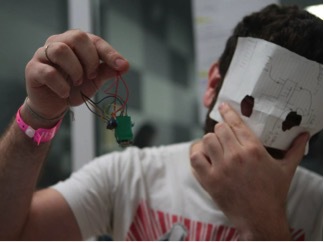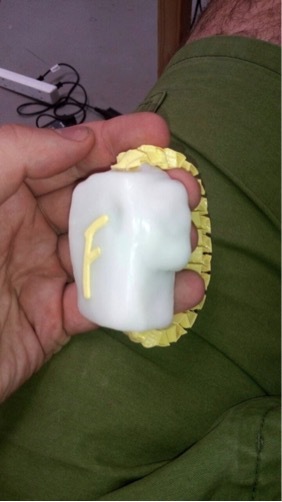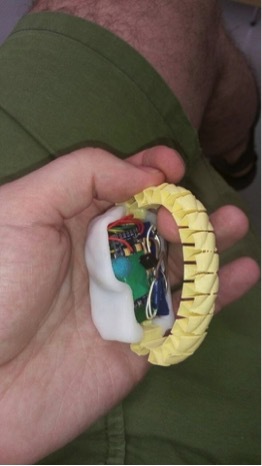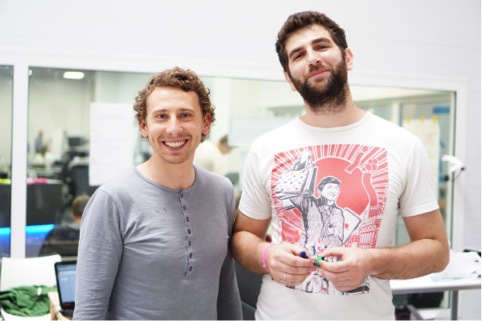The secret life of makers and hackatons

The other day I met with a wonderful person - Zentelechia Yura Zubarovsky (hardware technology start-up). He spent two days with engineers, hackers, designers, biologists, and marketers. He shared with me what he had learned and that girls are also needed in the projects of hell-bang.
What is a hackathon?
')
- Hackathon is an innovative way to generate new ideas.
- A hackathon is a continuous work (in the format of 24 or 48 hours) on its idea, prototype, business plan of the project and the final presentation to the experts.
- Hackathon is a platform that brings together experts from various technical, economic, creative and managerial areas.
- Hackathon is a new way to involve and create a community of makers and start-up cultures.
- Hackathon is an alternative to lectures, notes, TV shows and idle weekends.
- Hackathon is tech-fitness, technical and entrepreneurial brainwashing.
How does all this happen?
It all starts with the fact that you register for any hackathon - AngelHack , Hack for People {Hardware} , HackDay and others. I participated in one of them.
The first day is networking. After the presentation of the projects, people who came alone and without ideas began to disperse among the teams. Many approached me, were interested and thought to join, and in the end I got Vadim, who was engaged in sales and well-versed in marketing - just what is needed for the hackathon. After all, it is not enough just to assemble the device, it is still required to “pack” correctly in terms of the target audience and present the jury at the end.
We have divided responsibilities: I make a prototype, Vadim is responsible for the target audience and the formation of the presentation. He polls the girls present, identifying the requirements for the bracelet and identifying the purchase model, as well as simultaneously immersing them in the ideology of the product itself. It was important for us that the maximum number of participants and jury members be inspired by the idea of a bracelet for the next two days. Vadim coped with this task perfectly.
The team needs to share responsibilities. Artists, designers, engineers, programmers, marketers. Everyone does what he can. But still we work as one.

When creating the prototype, the following provisions were adopted:
- The prototype should be bracelet-shaped.
- At the presentation, it should work autonomously, without power wires.
- The prototype should be as compact as possible.
- Transmitted sensation - easy sliding with a finger on the skin surface
- The amplitude and speed of the transmitted sensation - must be identical to the sliding of a finger on the sensory surface
- The touch surface should be the plastic surface of the case itself.
From the point of view of technical implementation, at that time the prototype was represented as follows:
- Arduino Pro Mini
- Bluetooth module HC-04
- Small serv (found the smallest available at the time, weighing 1.7gr)
- The touch surface made of two aluminum petals and the CapSense library, which allows you to estimate the percentage of overlap of a petal with your finger, by measuring the capacitance of a capacitor formed by the system - "petal-finger" and thereby determine the position of the touch point of the surface.
- Nutrition assumed from two lithium tablets cr2032
The idea is one thing. The perfect is the prototype. There is already a Bluetooth module, and lithium tablets, and a smartphone, and a serv, soldering and 3-D printers.
The Bluetooth module communicates with the smartphone, which in turn through the server is connected to the smartphone of the owner of the second bracelet. The program for the smartphone was supposed to be initially concocted on Tasker + Python (SL4A) (there is an example of bluetooth chat, which could be used almost completely), but during the hackathon one of the participants showed APP INVENTOR (for those who are not yet aware, this is a visual MIT tool that allows you to quickly and easily create full-fledged programs for Android ( appinventor.mit.edu )
Back-end was originally supposed to be done on Meteor-e (yes, yes, it’s certainly a perversion, but I always won over his reactivity), but in the end I had to abandon the back-end and focus on the prototype and the program for the smartphone. I made a simple program with which you could connect via bluetooth to the bracelet, and running your finger over the hand on the screen - move the servus.
Here you immediately forget the words "I can not", "I can not." You are given 48 hours. You take and do: google, looking for a team, burrowing into smart books or habr. But in the end, still doing.
Before, I almost never soldered. All ideas were tested on mockups, twists, and finished components. But here it was necessary. First, everything had to be squeezed into a small volume so that the prototype did not look very monstrous, so I had to cut all the connectors and solder (a month later I mastered LUT and began experimenting with flexible printed circuit boards based on polyimide).

The body of the bracelet I wanted to initially design and print on a 3D printer, but in the process I realized that I just did not have time to do everything (first I had to finish assembling the electronics to get the final internal dimensions of the bracelet body and model the elegant outlines of the body). And the queue for 3D printers was huge (although there were 3 of them - the teams did not lose time and worked through the iteration after iteration of the new versions of the cases, parts and components of their devices). At some point, Damir (one of the participants in the hackathon, professionally engaged in the creation of robots) said: "What are you suffering, use polymorphus." We went to Chip and Dip, bought polymorphus and Damir helped to pile the hull. Super material - warmed up in water, kneaded, molded what you need and after cooling, got a durable and pleasant to the touch plastic. It looked, of course, monstrous, but for the hackathon just right.
I took the strap ready - someone was training in 3D printing and it suited us quite well. The strap has become the most beautiful part of the prototype. And the most short-lived - he constantly wanted to be pulled in his hands and he quickly cracked and fell apart.

In 48 hours you need to develop a business strategy, find competitors, analyze the market, Central Asia, prepare for a pitch.
Vadim, at this time, was studying competitors - he was looking for and analyzing similar projects. Immediately we found three bracelets, which very closely reflected our concept, but had, as it seemed to us, one significant difference. Tactilu.com, Taptap.me and bond-touch.com Everyone made themselves known about 2 years ago. There were fundraising campaigns for kickstarter, quite successful, but then there was some kind of silence - no press releases, no news, no mention on the Internet. I immediately wrote to the founders of the two projects a letter asking about the state and reasons for the lull. But I received no answer.
The time was nearing the presentation. Vadim strenuously pumped himself with some kind of perky music before the performance. The teams excitedly finished their offspring. Unexpectedly, a problem with the prototype emerged - the reed relay stopped working (I didn’t understand what happened to it), which connected the power to the server when it was supposed to move. And since the server, even without movement, consumes a holding current and is significant enough for lithium batteries, very soon the prototype began to freeze immediately after turning on the power. Fresh batteries instantly sucked. By the beginning of our presentation, the prototype was not functioning. I just held the bracelet in my hands, and Vadim told the jury a story.

Hackathon did his job - I got excited with the idea, met a bunch of interesting people and outlined a vector for the further development of the project. After a week, I met the creator of the Taptap.me bracelet. The other day they start sales - the product was made amazing - now I understand which one should set the bar for myself. Everything is still ahead.

At the hackathon you can and should come to the girls-engineers, designers, programmers, marketers - it all depends on your competencies. Hardware projects are awesome!
Source: https://habr.com/ru/post/294588/
All Articles